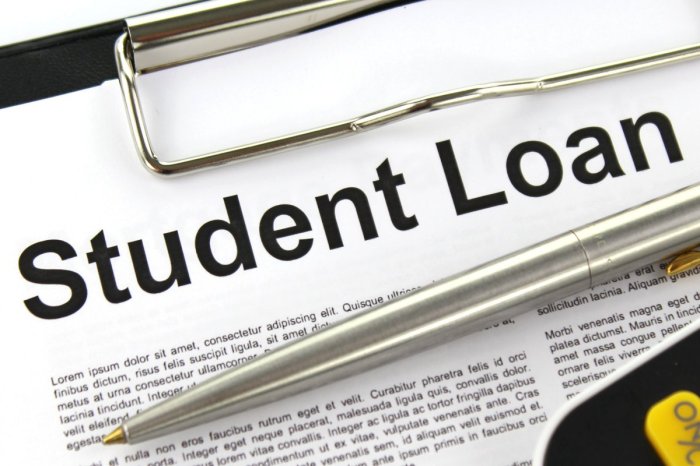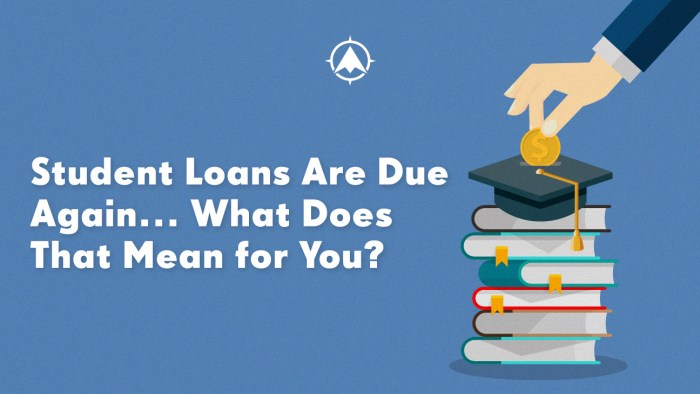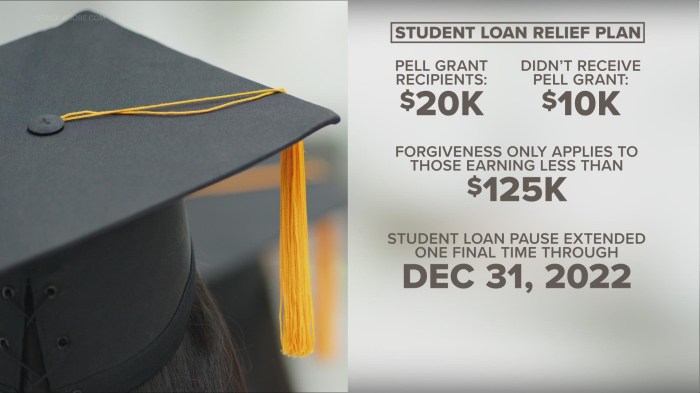
Navigating the complexities of student loan repayment can feel overwhelming. Understanding when your payments are due is crucial to avoiding late fees and maintaining a healthy credit score. This guide provides a clear and concise overview of how to determine your student loan due dates, manage your payments effectively, and navigate any potential challenges along the way. We’ll explore various repayment plans, common servicers, and strategies for timely payments, ensuring you’re well-equipped to handle your student loan obligations.
From identifying your loan servicer and understanding your repayment plan to utilizing available resources and exploring options for financial hardship, this guide empowers you to take control of your student loan repayment journey. We aim to demystify the process, providing practical advice and actionable steps to help you stay on track and achieve financial freedom.
Understanding Loan Due Dates
Knowing when your student loan payments are due is crucial for avoiding late fees and maintaining a good credit history. Understanding your repayment plan and its associated schedule is the first step in effectively managing your student loan debt. This section will clarify the various factors influencing your payment due dates.
Different repayment plans significantly affect when your payments are due. The most common plans include Standard Repayment, Graduated Repayment, Extended Repayment, and Income-Driven Repayment (IDR) plans. Each plan has a different repayment period and, consequently, a different payment schedule. For example, a Standard Repayment plan typically involves fixed monthly payments over a 10-year period, resulting in a consistent due date each month. In contrast, a Graduated Repayment plan starts with lower monthly payments that gradually increase over time, maintaining a consistent monthly due date but with varying payment amounts. Extended Repayment plans stretch payments over a longer period, potentially impacting the due date and amount depending on the loan’s terms and the borrower’s choice of payment frequency. IDR plans, such as Income-Based Repayment (IBR), Pay As You Earn (PAYE), and Revised Pay As You Earn (REPAYE), tie your monthly payments to your income and family size, potentially leading to fluctuating due dates and payment amounts as your circumstances change.
Factors Influencing Student Loan Payment Schedules
Several factors beyond the chosen repayment plan influence the frequency and due date of your student loan payments. These factors can temporarily or permanently alter your payment schedule.
Deferment and forbearance are two key mechanisms that can temporarily postpone or reduce your student loan payments. Deferment postpones payments entirely, often without accruing interest for certain qualifying situations such as returning to school or experiencing unemployment. Forbearance, on the other hand, allows for temporary reductions or suspensions of payments, but interest typically continues to accrue during this period. Both deferment and forbearance can impact your payment schedule, extending the overall repayment period and potentially shifting your due dates. The specific terms and conditions of deferment and forbearance vary depending on your loan type and lender. For example, a borrower might have their payments deferred for a period of six months due to unemployment, resulting in a six-month delay in their regular payment schedule.
Common Student Loan Payment Frequencies and Due Dates
Student loan payments are most commonly made monthly, with the due date typically falling on the same day each month (e.g., the 15th of each month). However, some lenders might offer alternative payment frequencies, such as quarterly payments. Quarterly payments would mean a payment is due every three months, with the exact due date specified by the lender. While less common, bi-weekly or even weekly payment options may exist depending on the lender and loan type. These different payment frequencies lead to varying due dates and require careful attention to avoid missed payments. For example, a borrower might opt for quarterly payments and their due date might be the last day of March, June, September, and December. It is crucial to confirm the payment frequency and due date with your loan servicer.
Locating Due Date Information
Finding the due date for your student loan payments is crucial to avoid late fees and maintain a positive credit history. This information is readily available through your loan servicer’s website, but the specific location may vary depending on the servicer. This section will guide you through the process and provide a comparison of common methods.
Accessing your student loan information online is generally straightforward. Most servicers offer a secure online portal where you can manage your account and view key details, including your payment due date. However, it’s important to note that the layout and organization of these portals can differ significantly. Therefore, familiarizing yourself with your specific servicer’s website is essential.
Accessing Due Date Information Through Your Loan Servicer’s Website
The following steps Artikel a general approach to finding your student loan due date online. Remember to replace the bracketed information with your specific details.
- Log in to your account: Navigate to your loan servicer’s website ([website address]) and log in using your username and password. If you’ve forgotten your login credentials, use the “Forgot Password” or similar option to reset them.
- Locate your account summary: Once logged in, look for a section titled “Account Summary,” “Dashboard,” “My Loans,” or a similar designation. This page usually provides a quick overview of your loan(s).
- Identify the due date: Within the account summary, you should find your next payment due date prominently displayed. It’s often presented in a clear format, such as “Next Payment Due: [Date].” Some servicers may also display a calendar view showing upcoming payments.
- Review payment details: Clicking on the specific loan may provide a more detailed breakdown of your payment information, including the amount due and any applicable interest.
- Check for updates regularly: Make it a habit to log in to your account at least once a month to monitor your payment due date and ensure no changes have occurred.
Comparison of Due Date Information Display Methods Across Servicers
The following table compares how several major student loan servicers display due date information on their websites. Note that this is subject to change, and it’s always best to consult the servicer’s website directly for the most up-to-date information.
| Servicer Name | Website URL | Due Date Location | Additional Information |
|---|---|---|---|
| Navient | [Navient Website URL] | Typically displayed on the account dashboard or summary page. | May offer a payment calendar feature. |
| Nelnet | [Nelnet Website URL] | Usually found on the main account page, often within a summary section. | May provide options to view payment history. |
| Great Lakes | [Great Lakes Website URL] | Generally displayed prominently on the account overview or dashboard. | May include details on upcoming payments and payment schedules. |
| FedLoan Servicing (now MOHELA) | [MOHELA Website URL] | Located on the account summary page, usually near other key account information. | Provides access to detailed payment history and other account management tools. |
Importance of Regularly Checking Your Loan Account
Regularly reviewing your student loan account is not just about finding the due date; it’s about proactive account management. Checking your account allows you to:
- Ensure your payment information is accurate and up-to-date.
- Identify any potential issues or discrepancies early on.
- Monitor your loan balance and track your progress toward repayment.
- Stay informed about any changes to your loan terms or servicer.
- Avoid late payment fees and negative impacts on your credit score.
Managing Payments and Avoiding Delinquency

Successfully managing your student loan payments is crucial for avoiding serious financial consequences. Failing to make timely payments can lead to a cascade of negative effects, impacting your creditworthiness and overall financial well-being. Understanding the potential repercussions and implementing effective payment strategies is essential for responsible loan management.
Delinquency on student loans carries significant weight. Missed or late payments can result in late fees, which can quickly accumulate and add substantially to your total debt. More severely, your credit score will suffer, potentially making it harder to secure loans, rent an apartment, or even get a job in the future. Furthermore, your lender may pursue collection actions, including wage garnishment or the seizure of assets. In some cases, your federal student loans could enter default, leading to even more stringent penalties and a severely damaged credit history.
Consequences of Missed Student Loan Payments
Missed student loan payments trigger a series of negative consequences. Late fees are immediately applied, increasing your overall debt. More importantly, a negative mark is added to your credit report, lowering your credit score. This can make obtaining future loans or credit cards significantly more difficult, as lenders view borrowers with poor payment histories as higher risks. Repeated delinquencies can lead to your loans being sent to collections, which will further damage your credit and potentially involve legal action. For federal student loans, default can lead to wage garnishment, tax refund offset, and difficulty obtaining federal benefits.
Strategies for Setting Up Automatic Payments
Proactive payment strategies are key to avoiding delinquency. Setting up automatic payments is one of the most effective ways to ensure timely payments. Most lenders offer this service, allowing you to schedule recurring payments directly from your bank account. This eliminates the risk of forgetting a payment due to busy schedules or oversight. You can often choose the payment amount and frequency (e.g., monthly, bi-weekly) to fit your budget. Be sure to review your account regularly to verify that payments are being processed correctly and that the account information remains up-to-date. Consider setting up email or text alerts to receive notifications when payments are made or are pending.
Calculating the Total Amount Due
Calculating your total payment amount involves adding together the principal, interest, and any applicable fees. The principal is the original amount you borrowed. Interest is the cost of borrowing money, calculated based on your loan’s interest rate and outstanding balance. Fees can include late payment fees, returned payment fees, or other charges as specified in your loan agreement. The formula for calculating the total amount due is:
Total Amount Due = Principal + Interest + Fees
For example, if your principal is $10,000, your interest for the month is $50, and you incurred a $25 late fee, your total amount due would be $10,050 + $25 = $10,075. It’s essential to check your loan statement carefully to ensure accurate calculation of the amount due. Contacting your loan servicer directly if you have any questions or uncertainties is always advisable.
Special Circumstances and Payment Options

Navigating student loan repayment can be challenging, especially when unexpected financial difficulties arise. Fortunately, several options exist to help borrowers manage their payments during periods of hardship or to tailor repayment plans to their individual financial situations. Understanding these options is crucial for avoiding delinquency and maintaining a positive credit history.
Understanding Deferment and Forbearance
Deferment and Forbearance Applications
Deferment and forbearance are temporary pauses in your student loan payments. A deferment is typically granted for reasons like unemployment or enrollment in a qualifying educational program. Forbearance, on the other hand, is often granted due to financial hardship, and may not require specific qualifying reasons. The application process usually involves contacting your loan servicer directly. You will need to provide documentation to support your claim, such as proof of unemployment or a letter from your doctor. The length of the deferment or forbearance period varies depending on your circumstances and the type of loan you have. It’s important to note that interest may still accrue on subsidized loans during a deferment, and on both subsidized and unsubsidized loans during a forbearance, potentially increasing your total loan balance over time. The servicer will provide you with detailed information on your specific loan terms and conditions.
Alternative Payment Options
When standard repayment plans prove too burdensome, several alternative options can provide relief. These may include extending the repayment term to lower monthly payments, or exploring income-driven repayment (IDR) plans. Choosing the right option depends heavily on your individual financial circumstances and long-term goals.
Income-Driven Repayment Plans
Income-driven repayment (IDR) plans adjust your monthly payment based on your income and family size. Several different IDR plans exist, each with its own formula for calculating payments and its own impact on your total repayment time and overall interest paid. For example, the Revised Pay As You Earn (REPAYE) plan caps your monthly payment at 10% of your discretionary income, while the Income-Based Repayment (IBR) plan may offer lower monthly payments, particularly in the early years of repayment, but can lead to a longer repayment period. These plans often lead to loan forgiveness after a certain number of years, usually 20 or 25, depending on the specific plan and your loan type. However, any forgiven amount may be considered taxable income. It’s essential to carefully compare the various IDR plans to determine which best suits your individual financial situation and long-term goals. Consider seeking advice from a financial advisor to assess the long-term implications of each option.
Visual Aids for Understanding Due Dates
Visual aids can significantly improve comprehension of complex financial information, such as student loan repayment schedules. Understanding these visuals allows for better planning and management of loan repayments. This section provides descriptions of visual representations designed to clarify key dates and processes related to student loan payments.
Student Loan Payment Timeline
This timeline is a horizontal bar chart, spanning the entire repayment period (e.g., 10 years). The x-axis represents time, divided into years, and potentially months. The y-axis shows the loan balance. The chart starts with the initial loan balance at the leftmost point. Each year, a segment of the bar is visually reduced to reflect the principal paid down. Key milestones, such as the halfway point, are marked with vertical lines and labels. Important dates like the first payment due date, grace period end date, and the final payment date are clearly marked along the x-axis with flags or annotations. The chart visually demonstrates the gradual decrease in the loan balance over time.
Flowchart for Missed Student Loan Payments
This flowchart begins with a single box labeled “Missed Payment?”. If yes, an arrow points to a box instructing the borrower to contact their loan servicer immediately. From there, another arrow leads to a box detailing options like forbearance, deferment, or repayment plan modification. If the borrower chooses one of these options, an arrow leads to a box confirming the action and providing a revised payment schedule. If the borrower does not contact the servicer, an arrow leads to a box warning about potential negative consequences such as late fees, damage to credit score, and potential default. From this box, arrows branch out to show possible outcomes, including debt collection actions. The flowchart ends with a box stating “Resolve Missed Payment.” Each decision point is clearly marked with yes/no options and clear directions.
Sample Student Loan Payment Calendar
This calendar displays a 10-year repayment plan. Each month is represented, and the due date for the monthly payment is clearly marked. The first month’s payment is highlighted differently. The calendar also shows the total amount paid year-to-date in a small box beneath each month. Furthermore, any significant milestones, such as the halfway point of the repayment plan, are indicated with a note or a different color highlighting. Finally, the last payment date is clearly marked and highlighted. The calendar provides a clear, at-a-glance view of the entire repayment schedule, helping borrowers track their progress and stay organized.
Final Conclusion

Successfully managing your student loan repayment requires proactive planning and a clear understanding of your obligations. By diligently tracking your due dates, utilizing available resources, and proactively addressing potential challenges, you can navigate the repayment process efficiently and confidently. Remember, staying informed and organized is key to avoiding late payments and protecting your financial well-being. Take advantage of the resources available to you, and don’t hesitate to reach out to your loan servicer if you have any questions or require assistance.
Answers to Common Questions
What happens if I miss a student loan payment?
Missing a payment can result in late fees, damage to your credit score, and potential collection actions.
Can I change my repayment plan?
Yes, you may be able to switch to a different repayment plan based on your financial circumstances. Contact your loan servicer to explore options.
Where can I find my loan servicer’s contact information?
Your loan servicer’s contact information should be available on your loan documents or your student loan account online.
What are income-driven repayment plans?
Income-driven repayment plans base your monthly payment on your income and family size, potentially lowering your monthly payments.
How do I set up automatic payments?
Most loan servicers allow you to set up automatic payments through their online portals. Check your servicer’s website for instructions.
